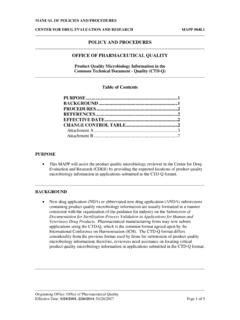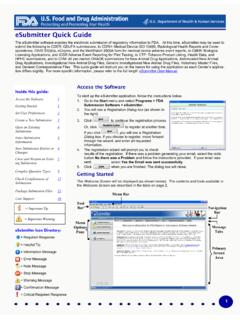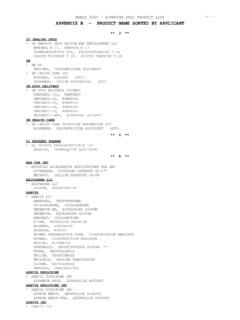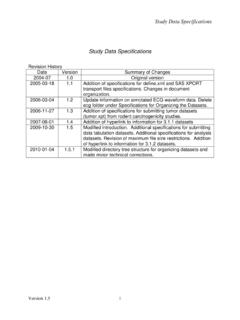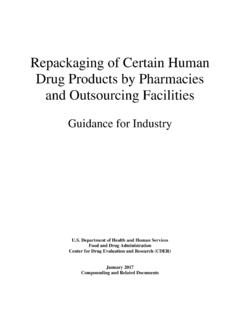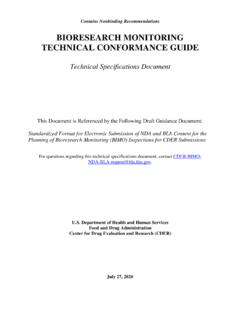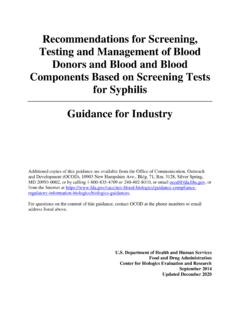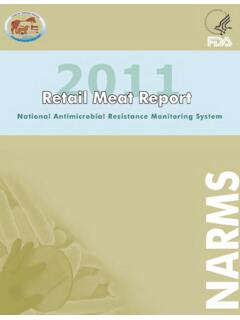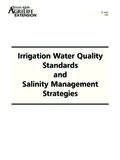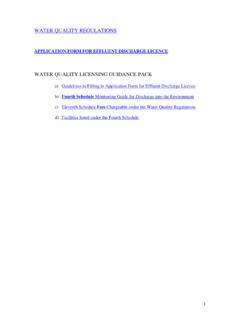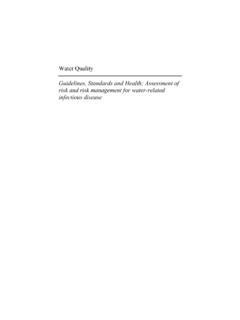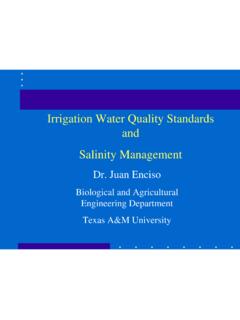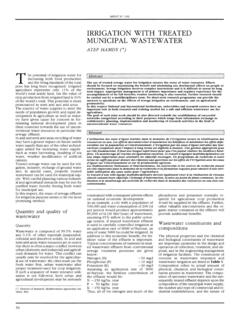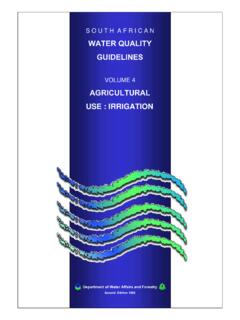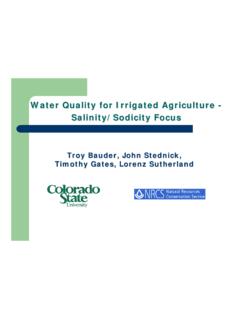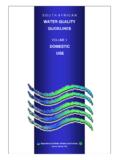Transcription of How did FDA establish requirements for water quality and ...
1 FDA AT A Department of Health & Human Services / Food & Drug Administration1 Public comments submitted in response to the proposed Produce Safety Rule, both as originally proposed and as revised in the supplemental notice, indicated concerns about the complexity and cost of the new requirements for agricultural water . Samir Assar, , director of the Division of Produce Safety, addresses those concerns and explains the FDA s reasons for establishing the water quality and testing provisions outlined in the final rule. He focuses on the requirements for water that directly contacts growing produce, other than sprouts (which have a more strict standard for irrigation - water quality ).
2 Q: Some challenge the scientific basis of the microbial water quality criteria, saying that generic E. coli is not appropriate for use in assessing the safety of agricultural water used for any purpose. And they question the use of Environmental Protection Agency (EPA) criteria for recreational water as a basis for the criteria for water that directly contacts growing produce (other than sprouts) in the final rule. What scientific support was used to craft the final standards ?The types of water used for agricultural water are incredibly diverse. After reviewing scientific literature, we determined that generic E. coli, bacteria found in the intestinal tract of both people and animals, are consistent indicators of the presence of feces.
3 Identifying fecal contamination is important in assessing the safety of agricultural water . As such contamination increases, so does the likelihood that disease-causing microorganisms are also present. The science behind EPA s recreational water criteria is based on recent epidemiological studies, and the scientific evidence showed that people have gotten sick by swallowing recreational water that is contaminated with feces. Using these criteria as a starting point, we took into consideration other technical information and recommendations to account for circumstances unique to produce growing. For example, we analyzed guidelines issued by the World Health Organization, which helped shape our provisions for post- irrigation microbial die-off and microbial , this rule (including our water quality requirements ) has a strong foundation in science and the risks associated with production practices.
4 Q: Is it necessary to use two different numerical criteria for water that directly contacts growing produce (other than sprouts), both the geometric mean (GM) and statistical threshold value (STV)? Does this need to be so complex?The criteria are complex because the nature of agricultural water is complex. It s important to keep in mind that agricultural water is estimated to be the most important pathway of contamination. How Did FDA establish requirements for water quality and Testing of irrigation water ? Questions and Answers with Samir AssarFDA AT A Department of Health & Human Services / Food & Drug Administration2 The goal of these water quality criteria is to understand and describe water sources and water distribution systems.
5 For untreated water used for this purpose, the required criteria are a GM of samples of 126 CFU or less of generic per 100 mL of water , and an STV of 410 CFU or less of generic in 100 mL of water . (CFU stands for colony forming units, a measure of bacteria.)Why are there two criteria for this water use? Because the GM and STV capture two different pieces of information about the distribution of levels of generic E. coli in a water source. The geometric mean (GM) measures what is called the central tendency, which is essentially the average amount of generic E. coli in a water source. The STV reflects the amount of variation in the E.
6 Coli levels, which can be caused by events such as a heavy rainfall. It measures expected deviations from the average for a water source. Collectively, both pieces of information provide a more complete description of your water quality than either one for the variability of E. coli levels in water sources also makes make it much less likely that a farm will have to discontinue use of its water source due to small fluctuations in water quality . Q: Are these water quality criteria absolute or has some flexibility been provided?There is quite a bit of flexibility provided in the final rule. Even if their water initially exceeds the GM/STV criteria for water that directly contacts growing produce (except for sprouts), farms do not have to immediately discontinue use of the water used for this purpose.
7 The rule allows farms to take corrective measures as soon as practicable, but no later than the following year, to achieve the microbial quality criteria. Options for corrective measures include: Applying a specific amount of time (in days) between last irrigation and harvest (up to a maximum four days), and/or between harvest and end of storage to allow time for potentially dangerous microorganisms to die off. Farms could also apply a calculated log reduction during activities such as commercial washing. (A log reduction estimates how many live bacteria will be eliminated by the activity.) Re-inspecting the entire affected agricultural water system under the farm s control and, among other steps, making changes to ensure that its water meets the criteria.
8 Treating the water . Farms can also use alternative water quality criteria, using a different indicator organism for fecal contamination (instead of generic E. coli) or different numerical criteria (instead of the GM and STV). A farm could also use a different microbial die-off rate and accompanying maximum time interval. FDA does not have to approve these alternatives, but farms must have adequate scientific data and information to support their conclusion that their alternatives provide the same level of public health protection as is provided by the final rule, and do not increase the likelihood that the produce will be unsafe or otherwise adulterated.
9 An important source of such information is peer-reviewed scientific literature. Farms might also use the results of third-party testing, or data derived from their own operation. Scientific support may come from commodity-specific or other guidance developed by FDA, industry, academia, trade associations, or other stakeholders. Combining information from peer-reviewed, scientific literature with other data and resources would help provide a robust support for an alternative options provide significant flexibility for compliance with the rule and can account for potential differences among regions, commodities and farming practices. Farmers will not have to figure out on their own how to justify alternative approaches.
10 FDA will be issuing a guidance document to help farms understand the use of alternatives. Q: What do you say to commenters who complained about the proposed water -testing regimen? They called the number of required samples excessive and costly. We recognize the range of water uses on farms. The final rule provides a framework to ensure that farms (and inspectors) know what is expected, but it also provides enough flexibility to deal with the incredible variations in water use for different foods, regions and practices. FDA AT A Department of Health & Human Services / Food & Drug Administration3We have established different testing regimens for untreated surface and ground water .
